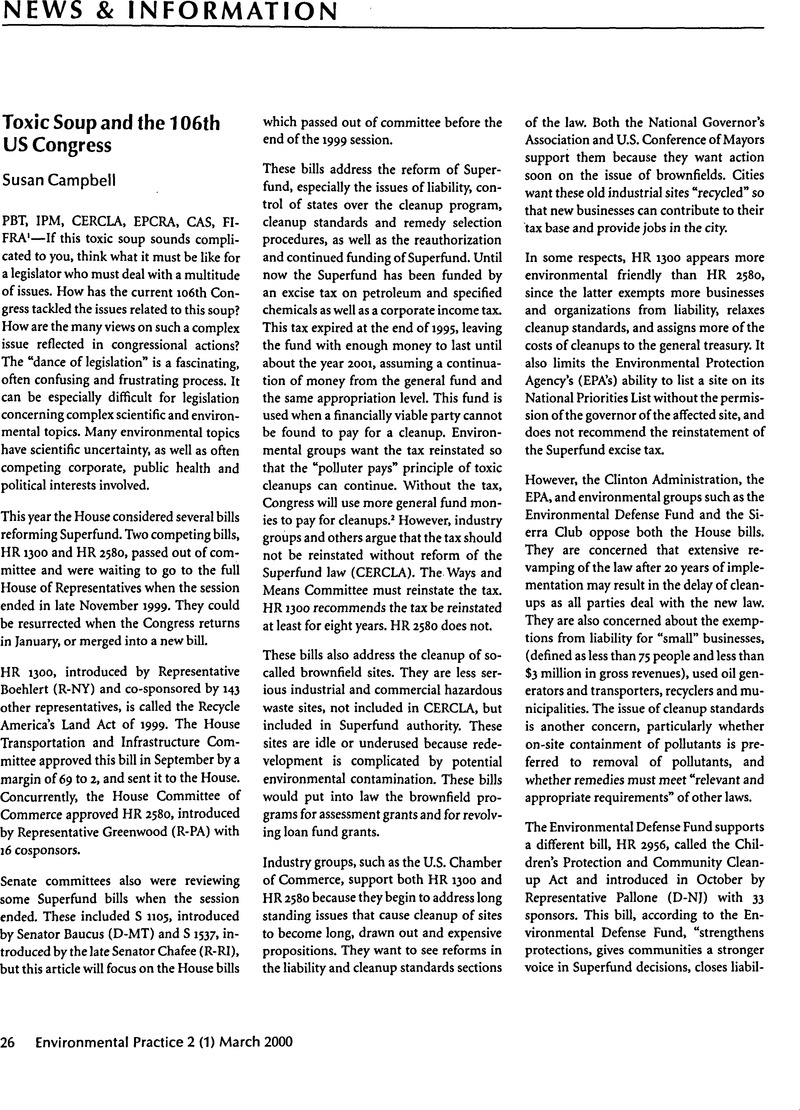No CrossRef data available.
Published online by Cambridge University Press: 13 July 2009

1. A common vocabulary is essential for communication. Yet one indication of the complexity of toxics is the number of acronyms, as well as the need for new words and concepts. My dictionaries, for instance (both in my computer spell check and my old fashioned hard-bound volume) do not have the word bioaccumulation in them. Neither do they like the word toxics (as opposed to toxic chemical) or brownfields! So, as a first step in dissecting current legislation and actions concerning toxic chemicals, let me explain the acronyms at the beginning of this article. PBT stands for ‘persistent bioaccumulative toxics”, IPM is integrated pest management, CERCLA is the so-called Superfund bill, the Comprehensive Response, Liability and Compensation Act of 1980. EPCRA is the Emergency Planning and Community Right-to-Know Act of 1986. CAS is “Chemicals Abstract Service Registry” the Environmental Protection Agency's list of toxic chemicals. FIFRA is the Federal Insecticide, Fungicide, and Rodenticide Act.
2. Congress approved slightly less than Clinton's request for the Superfund program for fiscal year 2000 ($1.4 billion, rather than $1.5 billion). Half of the money comes from the Superfund Trust Fund and half from general revenues. In 1999 the appropriation of $1.5 billion, included $1,175 from the fund and only $325 million from general revenues.
3. Most of the material for this article came from Congressional Research Service Issue Brief, IB10011, Superfund Reauthorization Issues in the 106th Congress, accessed through the Committee for the National Institute for the Environment, <www.cnie.org>.